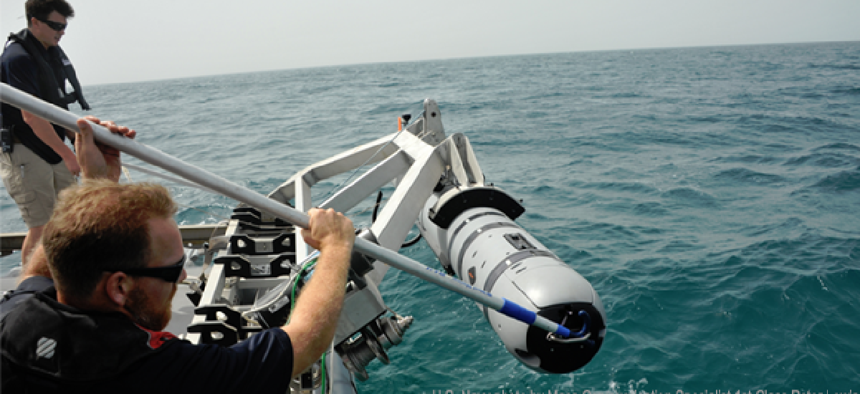Navy must deal with rising tide of sensor data


Connecting state and local government leaders
A recent RAND report said that a distributed cloud system could help the Navy deal with its growing amount of intelligence, surveillance and reconnaissance data.
The U.S. Navy needs to adopt a cloud system to keep pace with the deluge of intelligence, surveillance and reconnaissance (ISR) data being generated by unmanned aerial vehicles and needed for situational awareness and other mission-critical tasks, said researchers in a new RAND report.
“We’re only now at the point where we’re starting to put up new UAVs with incredible sensors, so the problem is only going to get worse,” said Isaac R. Porche III, a senior researcher with RAND and co-author of the report.
Porche said the Navy had argued for more manpower to deal with the growing volumes of data, but budgetary pressures forced it to seek other options to improve efficiency. RAND, which was hired to do a quantitative assessment, looked at the imagery, video and audio that the Navy was collecting from UAVs, studying how long it took for its analysts to process data from several siloed databases using different desktop applications.
The report, Data Flood: Helping the Navy Address the Rising Tide of Sensor Information, concluded that the Navy may reach a tipping point as early as 2016 when “analysts are no longer able to complete a minimum number of exploitation tasks within given time constraints.” In other words, analysts will be much less effective than they are now in finding value in the exponentially increasing data if the Navy doesn’t change the way it collects, processes, uses, and distributes that data.
The Navy collects the equivalent of what’s stored in the Library of Congress -- about 200 terabytes -- every other day, Porche said. Even so, the Navy doesn’t even save a lot of the data because it doesn’t have a good way to organize it properly, he added.
RAND recommended that the Navy adopt a distributed cloud approach similar to what the intelligence community and major corporations like Google are doing -- keeping data in different locations and tagging it so it can be searched and accessed easily.
According to the report, this cloud architecture “enables development of Web services and widgets that bridge identified gaps” and provides the highest level of interoperability compared with the other options.
With this option, analysts wouldn’t be wasting bandwidth because they’re not downloading raw data, that may not be useful to them, Porche said. Rather, they would be looking at metadata stored in a virtual data analytic cloud.
“We definitely saw that if you go to this very intelligent metadata, tagging-type approach you can handle a whole lot more data than manual efforts today,” he said.
Porche said the Navy and other services could design tools and systems to work with the National Security Agency’s distributed cloud, using it as a sort of Google for analysis and allowing them to more easily share intelligence.
From the intelligence community’s perspective, Porche said a distributed cloud approach isn’t necessarily cutting edge in terms of technology, but “what’s revolutionary is that now you’re changing the way you’re going to view data, moving away from these stovepipes.”
However, one challenge will be integrating legacy data and systems, he said. It’s a bump they’ll have to go over, he added.




